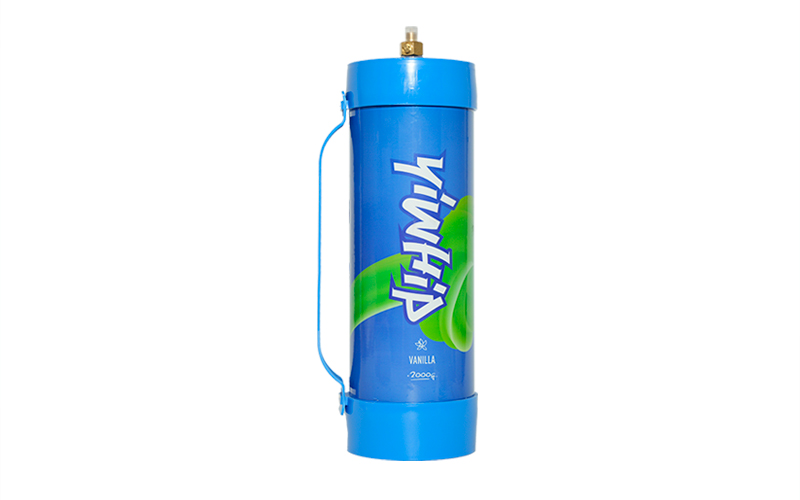Whipped Cream Chargers: Beyond the Kitchen Essentials
In a rapidly evolving gastronomic culture, tools that seem trivial often harbor transformative capabilities. The humble whipped cream charger—typically dismissed as a quick-access gadget for dolloping cream—is steadily shedding its limited persona to embrace a broader and innovative role across industries.
- Beyond Desserts: Expanding the functionality of nitrous oxide in modern culinary science.
- Versatility at its Peak: From cafés to fine-dining bars, exploring non-traditional applications of this device.
- Economical Elegance: How whipped cream chargers serve efficiency without compromising quality.
- Cutting-edge Trends: Incorporating molecular mixology, espuma techniques, and more.
A Modern Staple with a Rich Past
Pioneering a journey that traces back more than two centuries, whipped cream chargers may be compact gadgets, but their impact stretches far into the annals of catering history. Their origin lies not within an elite restaurant, but rather an unexpected place—a 19th-century soda shop where the nitrous oxide siphon made early appearances in fizzy beverages before evolving into a kitchen standard. These devices were once bulky contraptions used only in high-end patisseries. Yet today’s streamlined form is nothing short of technological elegance—stainless steel precision meets user-friendly design, enabling baristas in coffee corners and pastry chefs behind exclusive dessert menus to create airy delights with just the push of a button.
The Chemistry Behind Cloud-like Textures
Uncovering the science beneath whipped cream's fluff is both enlightening and unexpectedly intricate.
When you release the pressure from a N2O canister, magic doesn't exactly occur—that’s chemistry working. Let's delve:
At room temperature, nitrous oxide remains soluble enough within heavy cream until agitation prompts it into rapid expansion. As gas dissolves in fatty content, bubbles appear, forming what chefs fondly term a “structure of air." Without N₂O, you're bound by the whims of whisk speeds, muscle fatigue, and inconsistent textures. With it? A repeatable cloud—fluffed, flawless, frothed with scientific exactitude.
This delicate chemical dance underscores one core truth: these dispensers don’t merely speed up a task; they stabilize outcomes once vulnerable to variables—an advantage no manual method achieves consistently.
Digital Age Creativity Meets Gastronomy
In a foodie era driven by visual storytelling—where plating rivals presentation skills—you'll find the whip cream dispenser stepping well beyond its origins into avant-garde roles. Enter molecular gastronomy labs, artisan gelatoris, craft cocktail lounges, and experimental pastry shops where foams defy gravity atop savory dishes or latté layers ripple like liquid velvet. In many cases, these creations owe their existence directly to this seemingly modest gadget.
Bars in Sofia innovate signature cocktails by injecting velvety nitro foams atop gin bases—resulting in sensory layers previously reserved solely for Michelin-starred kitchens. Similarly, pastry chefs now utilize these siphons to whip vegan meringue substitutes—think aquafaba, silken tofu, or even chickpea water—all of which mimic traditional egg whites through aeration. And yes—without N₂O technology pushing air cells into structure-sensitive blends, this wouldn’t quite…whip up.
Eco-footprints & Market Outlook
Like most consumer goods under modern sustainability lens scrutiny, there is a valid environmental query around disposable nitrous capsules:
They are metal. Non-toxic. Recyclable—if recovered properly. But still...what about re-usables?
The global market is responding with dual-prong innovation:
- Manufacturers launching recyclable versions.
- Chefs adopting refill-based systems wherever logistics favor them over pre-loaded ones.
Moreover, a trend worth monitoring?
Bigger isn't always better. Smaller venues leaning green now adopt micro-dispensers designed explicitly to cut waste—not only in raw gases released per serving but also minimizing plastic accessories and packaging.
The takeaway?
Sustainability-focused evolution may yet steer future models in unpredictable directions. Will the whipped cream tech space mirror electric vehicles’ leap towards carbon-neutral infrastructure soon? Watch this space—there might indeed be some delicious turbulence along the way.
Final Thoughts: More Than Just Fluff
In the ever-shifting terrain of culinary arts, few instruments remain static—or relevant—long after conception.
The whipped cream charger, born from industrial curiosity, matured alongside our appetite for precision. From espresso foam finishes to plant-based aerated creams, the tool has become indispensable not because it makes tasks faster, but because
it enables perfection regardless of background or equipment levels.
Serving as a cornerstone across casual café fare to high-art gastronomic expression, nitrous-infused whips are now embedded deep in the creative DNA of professionals worldwide—from Varna bakeries experimenting with layered desserts to niche distilleries infusing local brandy drinks with herbal espumas—the limits aren't material but imagination. So whether your mission is to elevate daily indulgences or carve novel experiences into everyday dining—it turns out mastery begins with mastering pressurization. And somewhere between a nitrogen bubble pop and a perfect spoonful of stabilized foam? Lies innovation at its sweetest.

